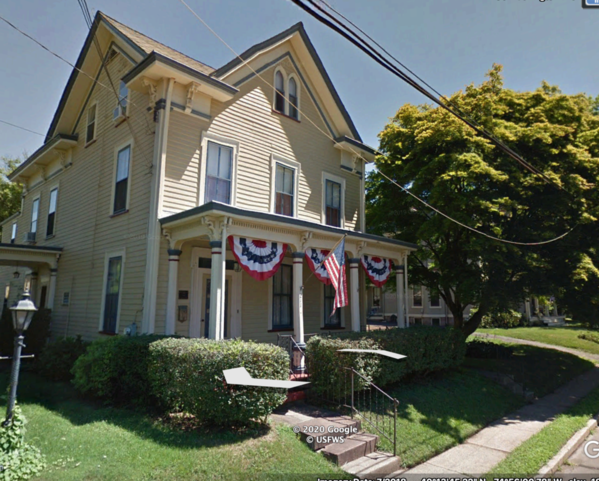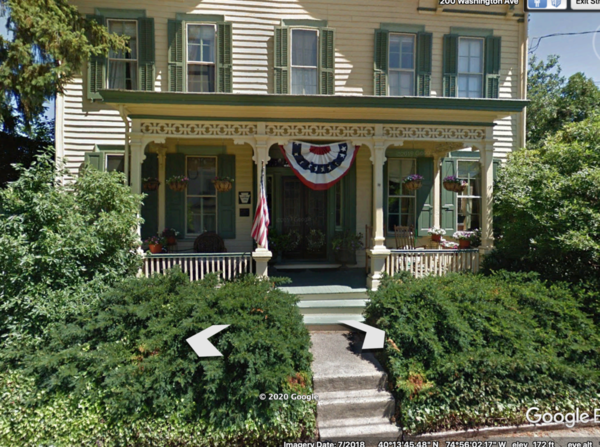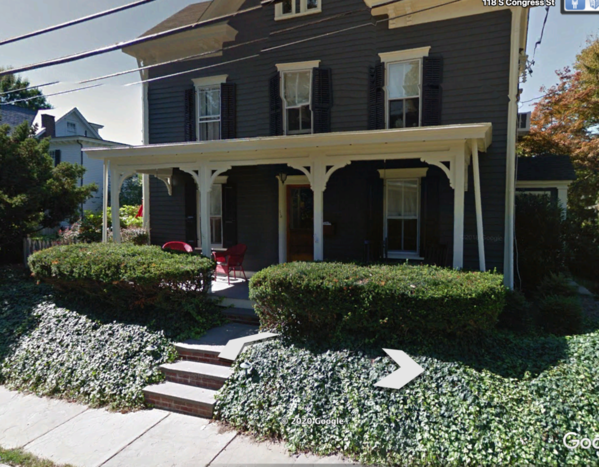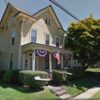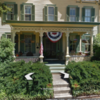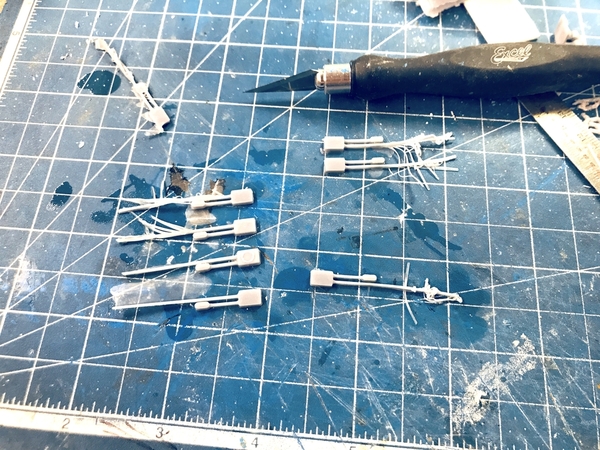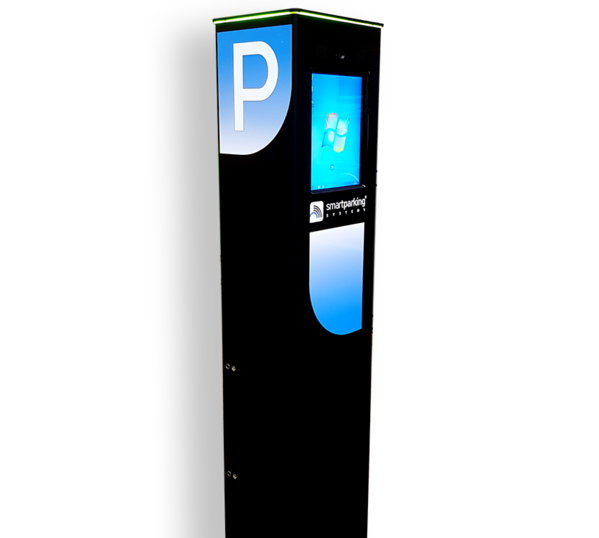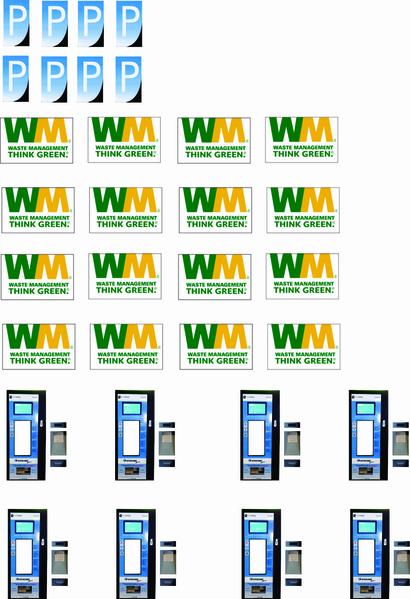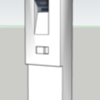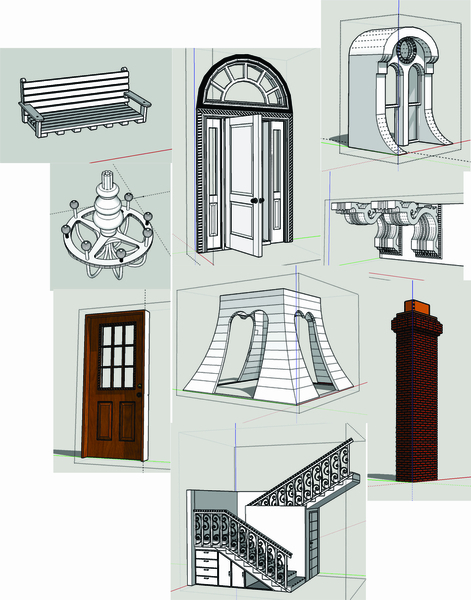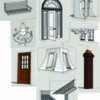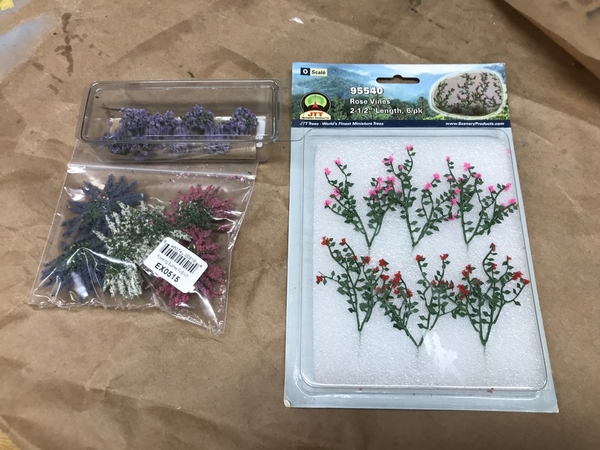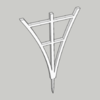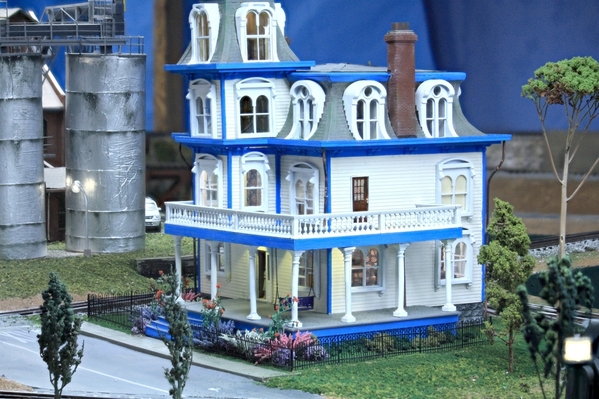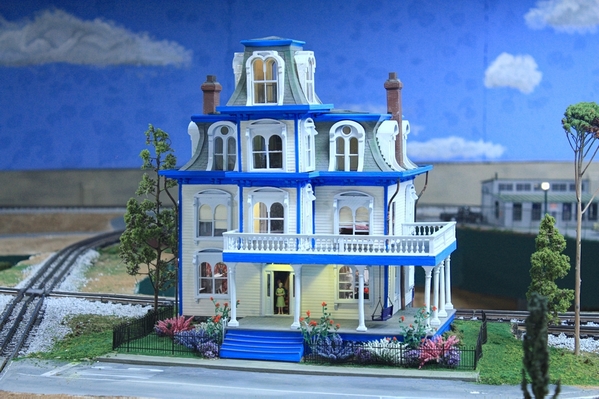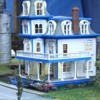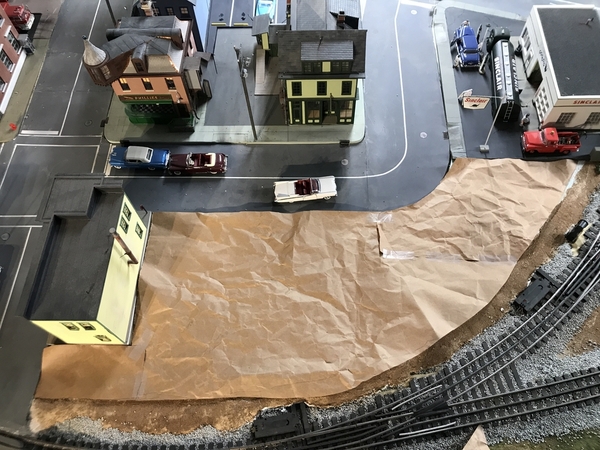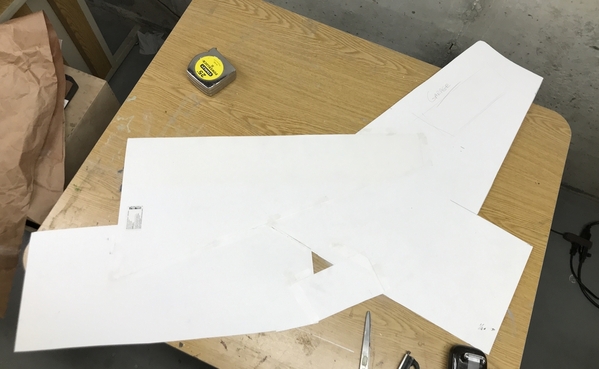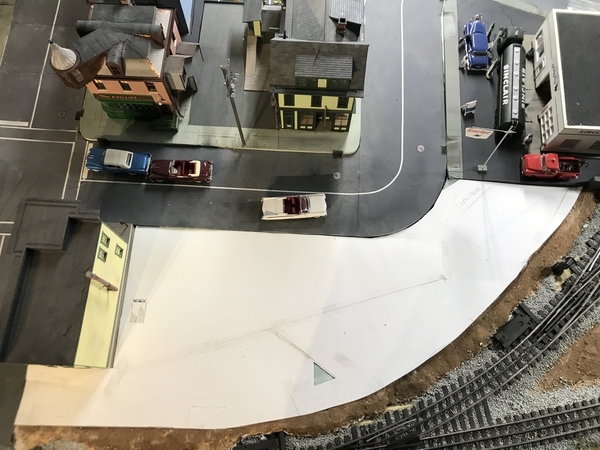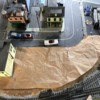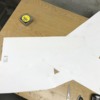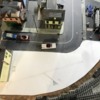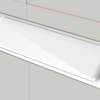Thanks guys! Mark, if you're amenable, I may send you the manuscript for your perusal. It's not too long.
Working two projects at the same time makes for a lot of pictures. Bear with me.
The parking lot sub-project is almost finished. I got all the painting done including the parking lines. I added strategic oil and trans-fluid stains. When this dries overnight I'll go back and add tire dirt, some tar strips and some pavement patches.
The concrete color I used on Gravely was a more green tint and it didn't match my newer shade and I didn't like it. I repainted Gravely's sidewalk to now match the continuation of said sidewalk on the parking lot. I started masking all the parking lines with strips of Tamiya tape cut to 3mm. I used dividers to space the lines and drew then sort-of square to the pavement edges. Only after I almost finished masking when I realized that I needed to paint the white first, then mask and finally paint the asphalt color. So I marked the tape's location with some pin pricks, pulled the tape and painted the white using some craft acrylic paint. I tend to use craft paints on structure projects since it dries dead flat and has pretty good coverage is cheaper than Tamiya. Here's after painting the white.

Instead of cutting more Tamiya tape to 3mm, I found some Tamiya Vinyl flexible masking tape in my tape draw that already was 3mm. I aligned the tape with the pin prick marks. You can just barely see the white tape on top of the white paint.

With all the masking I was able to slather on a mix of Artist Tube Acrylic Mars Black and the same white craft paint. It mixes quite fine and the very flat white helped flatten the tube acrylic more. Once the black set up I pulled the tape. After it dried further I went back and touched up any leakage.
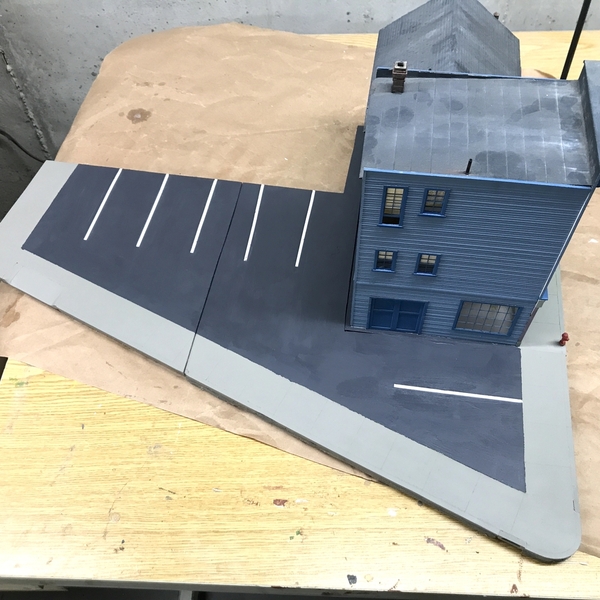
And then I added the stains and used a pencil and straight edge to highlight the pavement groves. I also painted the storm drain inlets.
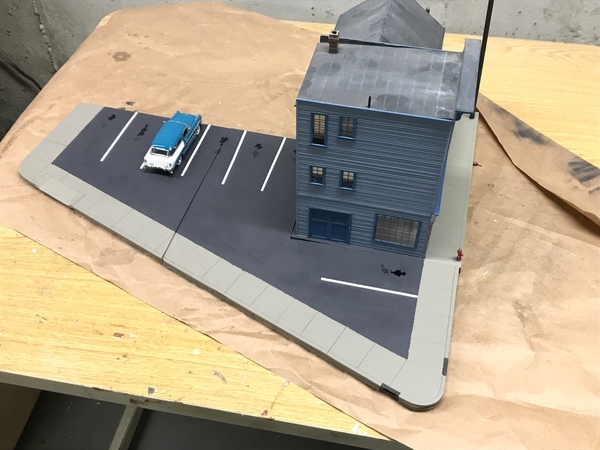
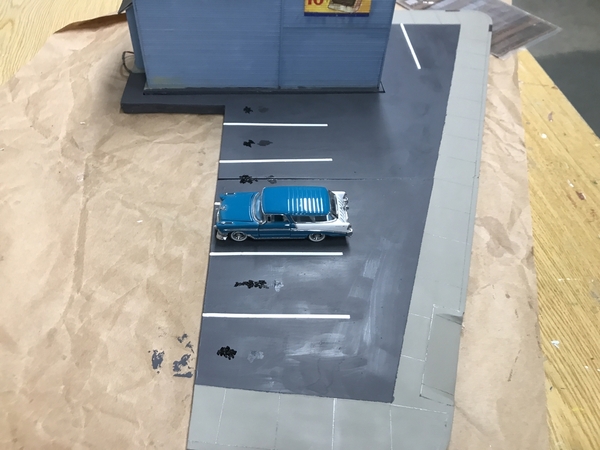
After more weathering, this will be ready to drop back onto the layout tomorrow. I shouldn't have split the plate since it now has a seam that serves no purpose. It was originally split when the House was going on it so I could build the garage on a separate base without disturbing the House. When I changed the site, that "split" decision was moot. BTW: that was the last curb cut casting I had. It was the Sculpey master I used to make the plaster parts. I still have the mold. I could cast them out of resin also. I didn't resin cast when I made them originally. Or I could 3D print some…. Options, options, options.
Speaking of the House...
I got the sloppy stuff done today. I created all the grades with Sculptamold and embedded the first course of the RR Tie retaining wall into wet plaster so it will provide a realistic base for the wall.
As you can see I got the Sculptamold to a pretty good dirt color. When dry it will be lighter, but it won't be white. It still needs a coat of paint to glue all the ground cover in place. I also splurged and bought some complete floral pieces of Scenic Express. I normally don't do this, but I want it to have a garden with some color. This is a real focal point for the railroad and needs some special treatment. My mix might have been a little wet, but I was able to sculpt it reasonably well. I made it level with the Masonite baseplate.
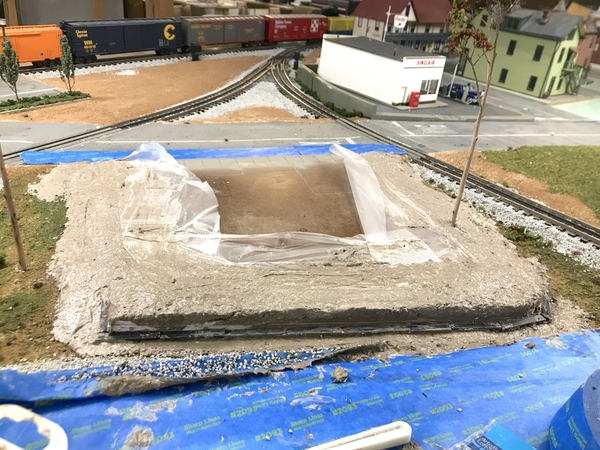
Here's another view of the plaster as it was laid in.

And a closer look at the base of the retaining wall.

I'm not a big fan of landscape work. It's a little too sloppy and imprecise for my sensibilities. It's funny since a young boy I would play in the dirt for hours and had some great earth moving machines to do the job. I kind of grew out of it.
When the plaster set up a bit so it wouldn't slump I pulled the baseplate. I didn't want it to be cemented in, since, as you'll see, I'm going to do more work on it.
This is from the inside-layout view.
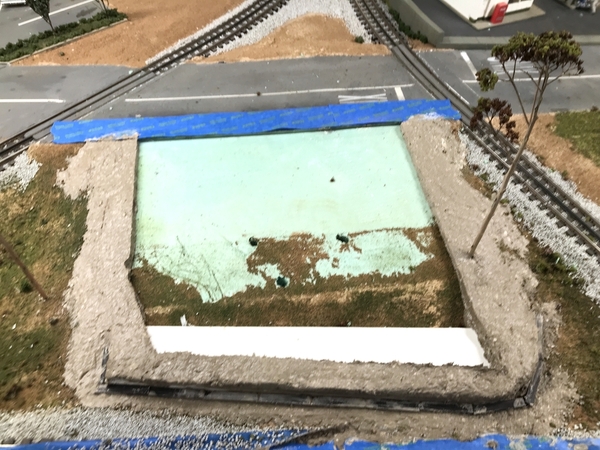
And a view from the aisle.
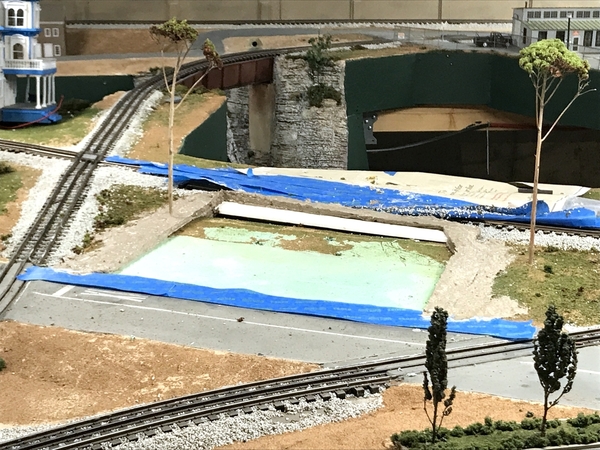
After pulling the base I masked off the areas where the house will sit so I can use a thin layer of plaster so the house beds down a little. As I noted some time ago, the porch lattice and front steps are a little proud of the foundation. Having an 1/8" of plaster will let the house settle in and even out the mismatch. The house just sits inside the mask line.
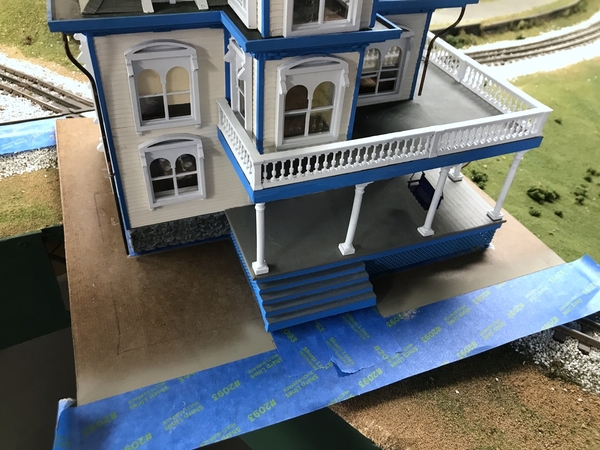
I will taper the plaster up to the mask, featheing it down to the edge. The edge matches the STM so I don't want to create a step. The house will be glued to the baseplate, but the baseplate WILL NOT be glued into its socket.
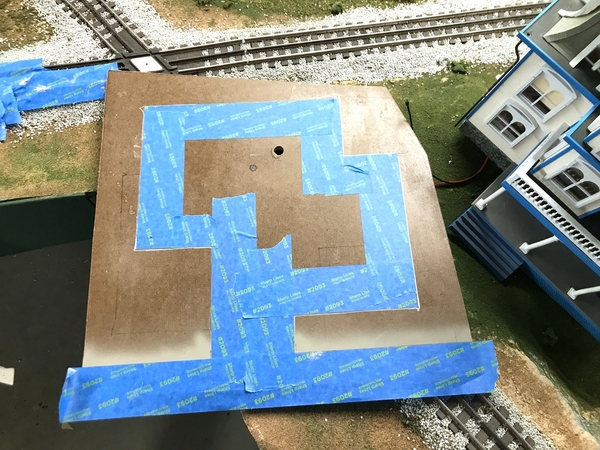
I'll work on the baseplate tomorrow. STM takes a long time to fully cure. The plaster of paris sets in hours, but the fibers retain moisture for days. Before you paint it with latex paint to hold the ground cover, you need to have the STM fully dry. It takes patience. I don't think I'm going to use STM on the baseplate. I'll stay will basic plaster for a smoother finish.




